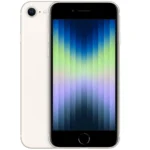Streaming media content from your smartphone to your TV has become a popular way to enjoy a more expansive viewing experience. This method is often used to display photos, play videos, and mirror your phone’s display for various other purposes. Nowadays, many smartphones and televisions natively support screen mirroring and casting.
The process typically involves having a Wi-Fi connection and can be initiated through a few simple steps. If your TV is a smart TV and connected to the same network as your phone, you may only need to tap a single button in a specific app or swipe down to access the screen casting feature. However, if you don’t have a smart TV, external devices such as Chromecast, Apple TV, or other streaming sticks and boxes can bridge the gap, enabling you to wirelessly connect your device to your TV.
How to Share Your Phone’s Screen on Your TV
Sometimes, the tiny screen on your phone just isn’t enough. Maybe you want to show off vacation photos, share a funny video, or stream a movie on a bigger screen. That’s where screen mirroring and casting come in!
What’s the difference between casting and screen mirroring?
- Casting: This lets you send specific content (like a YouTube video or a movie from Netflix) from your phone to your TV. Your phone acts like a remote control, but the content plays directly from the streaming service on the TV.
- Screen Mirroring: This shows an exact copy of your entire phone screen on the TV. Everything you do on your phone will be displayed in real time.
How to Mirror Your Android Phone’s Screen
Here’s how to mirror your Android screen on a compatible TV:
- Make Sure Your Devices Are Compatible: Your TV needs to support screen mirroring (often through Chromecast or Miracast technology). Many smart TVs and streaming devices already have this capability. Your Android phone usually needs to run Android 5.0 or later.
- Find the Screen Mirroring Option on Your Phone: This option may have different names depending on your phone’s brand and Android version. Look for terms like:
- Cast
- Screencast
- Smart View
- Wireless Display
- Miracast
- Select Your TV: Your phone will start searching for compatible devices. Once you see your TV in the list, tap on it.
- Start Mirroring: You might get a prompt on your TV to accept the connection. Once connected, you should see your phone’s screen on the TV!
How to Mirror Your iPhone’s Screen
Here’s how to mirror your iPhone using AirPlay:
- Check Compatibility: Your iPhone needs to support AirPlay, and your TV needs to be AirPlay 2 compatible. Many modern smart TVs and Apple TV devices support this.
- Connect to the Same Wi-Fi Network: Both your iPhone and TV need to be on the same wireless network.
- Open Control Center: Swipe down from the top right corner (or swipe up from the bottom of the screen on older iPhones).
- Tap Screen Mirroring: This might look like two overlapping squares.
- Select Your TV: Choose your Apple TV or AirPlay-compatible TV from the list.
Comparing Screen Mirroring and Casting
| Feature | Screen Mirroring | Casting |
|---|---|---|
| What it shows | Exact copy of your entire phone screen | Specific content from a streaming app |
| Battery Usage | Can drain your phone’s battery faster | Generally less battery-intensive |
| Internet Requirement | Depends on your TV’s technology | Requires a streaming service and internet connection |
Key Takeaways
- Phone-to-TV streaming allows for viewing content on a larger screen.
- Both smart TVs and external devices enable wireless connections.
- A shared network is typically required for this functionality.
Essentials of Streaming From Phone to TV
To share your smartphone’s screen with your TV, you can choose between wireless methods like Chromecast or AirPlay, and wired connections using cables like HDMI. Let’s explore the essentials for each method.
Understanding Your Options
There are several ways to stream content from your smartphone to your TV. Wireless streaming devices such as Chromecast, Apple TV, and Roku allow Android and iPhone users to send content over a Wi-Fi network. Smart TVs often come with built-in apps and support for technologies like screen mirroring and AirPlay, offering ease of use and flexibility.
Setting Up a Wireless Connection
To connect wirelessly, both your smartphone and TV must be on the same Wi-Fi network. For Android phones, you can use screen mirroring through the settings; look for a “Cast” or “Screen Cast” button. iPhone users can select their TV via AirPlay in the control center. Wireless methods do not require cables, making them convenient for quick connections.
Exploring Wired Alternatives
Wired connections can offer a more stable streaming experience. Use an HDMI cable with an adapter that matches your phone’s output, such as Lightning for iPhones or MHL/Slimport for Android devices. Connect the adapter to your phone and the HDMI cable to your TV. Switch to the correct HDMI input on your TV, and your phone’s screen should appear, ready for streaming.







